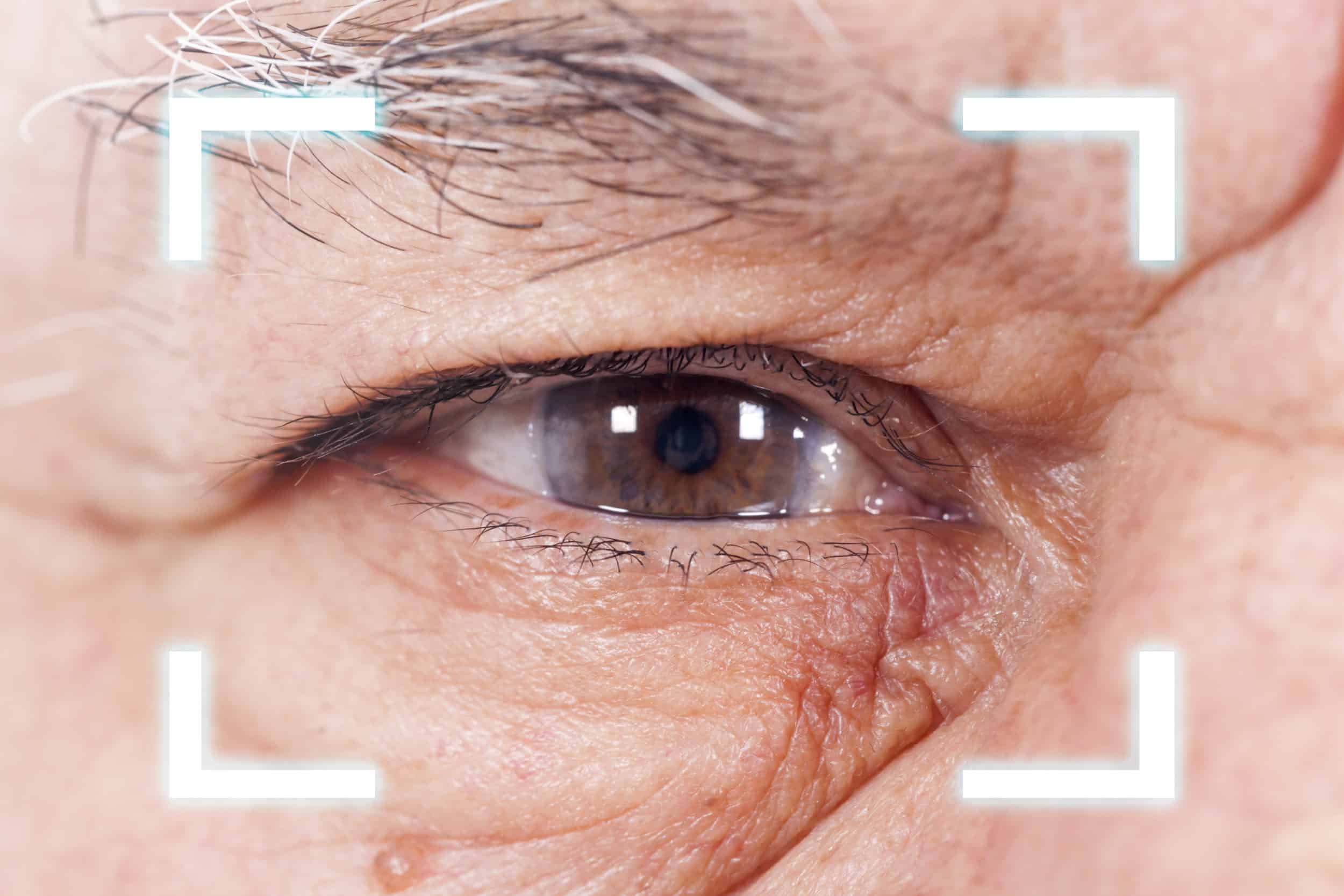What is the Cornea?
The cornea is the clear covering on the front of the eye. It accounts for a large part of your eye’s focusing power. Light enters the eye through the cornea and is refracted back onto the retina in the back of the eye. The retina then sends signals to the brain through the optic nerve and the brain interprets what a person is seeing. For clear, accurate vision, the cornea needs to be correctly shaped and free from clouding.

Then incoming light rays can be focused precisely. But the cornea can become misshapen or cloudy from injury, infection, or eye disease, and it may need to be replaced. These transplants may replace the entire cornea or only the damaged portion of it.
Dr. Brian Groat performs corneal transplants at Cape Fear Cataract & Cornea in Willmington, NC.
What Dr. Groat’s Patient’s Say
– Carmen P.
What is a Corneal Transplant?
A corneal transplant is a surgical procedure that replaces all or part of your damaged cornea with donor corneal tissue. Corneal transplants can be categorized as “full-thickness” or “back layer.” The goal is to replace damaged or diseased corneal tissue that is impacting the patient’s vision beyond what can be corrected with eyeglasses or contact lenses.
Why Would a Person Need a Corneal Transplant?
Corneal eye disease affects over 10 million people worldwide; it is the fourth most common cause of blindness. When disease or injury damages the cornea, it can become swollen, scarred, or severely misshapen, and this distorts the quality of the person’s vision. In these cases, eyeglasses or contact lenses are used as the first treatment options. But when these can no longer provide the degree of correction needed, a corneal transplant could become necessary. In other cases, swelling can become so painful that a transplant is the only route forward.
These conditions could all be reasons for a corneal transplant:
- An outwardly bulging cornea
- Fuchs’ dystrophy
- A thinning cornea
- Clouding of the cornea
- Cornea scarring from injury or infection
- Swelling of the cornea
- Corneal ulcers
- Complications from previous eye surgery
How to Prepare for Corneal Transplant
Prior to any transplant procedure, you will undergo:
- A thorough eye exam — Dr. Groat will look for any conditions that could lead to complications.
- Measurements of your eyes — Dr. Groat will take measurements to determine the size of the corneal donor tissue needed.
- A review of all medications and supplements — Certain medications and supplements can interfere with your transplant and you’ll need to stop taking them.
- Treatment for other eye problems — We must clear any unrelated eye issues, such as an eye infection, prior to your transplant procedure.
Types of Corneal Transplant Procedures
There are multiple types of corneal transplant procedures including Deskemet’s Membrane Endothelial Keratoplasty (DMEK), Penetrating Keratoplasty, and Descemet’s Stripping Endothelial Keratoplasty (DSEK). The procedure performed most frequently by Dr. Groat, and the one he specializes in most is DMEK.

Deskemet’s Membrane Endothelial Keratoplasty (DMEK)
DMEK is a procedure that is considered the standard of care for the treatment of disorders such as Fuchs’ endothelial dystrophy and Bullous Keratopathy. The technique is performed to reduce swelling and restore sharper, clearer vision. Click here to learn more about DMEK.
Penetrating Keratoplasty (PK)
This is a full-thickness replacement of your damaged cornea. The entire cornea is removed and replaced by a donor cornea.
Descemet’s Stripping Endothelial Keratoplasty (DSEK)
As technology and surgical techniques have improved, full corneal transplants are no longer the only option. Instead, DSEK removes the diseased tissue from the back corneal layers, including the endothelium, along with the Descemet membrane, a thin layer of tissue that protects the endothelium from injury and infection. Donor tissue is then implanted to replace the removed tissue. The patient keeps the remaining healthy portions of his or her cornea.
DSEK is an option for patients with endothelial disease. This is a disease of the lining, the endothelial cell layer, of the cornea. These cells are responsible for pumping fluid out of the cornea. For the cornea to be clear, an exact level of hydration is vital. In patients with the condition known as Fuchs’ dystrophy, endothelial cells are increasingly lost over time, leading to swelling of the cornea and loss of vision.
Corneal Transplant With Dr. Groat
Prior to this procedure, you’ll be given a sedative to help you relax. Because you need to be awake during the procedure, only local anesthetic is used, so that you have no feeling in your eye area.
- Penetrating keratoplasty
The most common option is a full-thickness replacement. Dr. Groat will cut through the entire thickness of the abnormal or diseased cornea, removing a circular disk of tissue. An instrument called a trephine is used to precisely make the circular, button-sized cut. The next step is to cut the donor tissue to the same size. This donor tissue is then placed into the spot where the damaged tissue was removed, and this is stitched into place. - Descemet’s Stripping Endothelial Keratoplasty (DSEK)
For patients who have endothelial disease, about one-third of the cornea is replaced in DSEK. This allows the benefit of the patient retaining the natural shape, optical quality, and strength of his or her original cornea.
For DSEK, Dr. Groat removes the damaged endothelial cells. He then replaces these cells with a very thin healthy lining layer from a donor cornea. An air bubble is placed to hold the new tissue in place on the day of the surgery, so sutures are not used. After the procedure, patients must lie flat in a face-up position to allow the air to secure the new cornea in place while the new endothelial cells begin pumping fluid. Compared with full-thickness transplants, DSEK allows patients to recover their vision much more quickly.
How is Recovery From Corneal Transplant Surgery?
There is a different recovery timeframe between full-thickness transplants or DSEK, but patients need to be patient in either case. Recovery after a cornea transplant takes time, up to a year or even longer. With DSEK, thanks to the lesser amount of transplanted tissue, patients can have their best vision in about three months after their procedure.
In the beginning, your vision will likely be even worse than it was prior to your surgery because your eye takes time to get used to the new cornea. Your vision will improve and you’ll begin returning to your normal routines. Most patients can return to work within a week after surgery, depending on your job and how quickly your vision begins to improve.
When Can I Return to Normal Activity
You’ll need to be careful with lifting, as you need to avoid increasing blood pressure to the head and face. Heavy, strenuous exercise and lifting are prohibited for a number of weeks; Dr. Groat will discuss this with you.
You’ll use steroid eye drops for several months after your transplant to help your body accept the new corneal graft. You’ll also need to protect your eye at all times with either a shield or eyeglasses; you can’t inadvertently bump your eye.
What is the Success Rate for Corneal Transplants?
Success rates of corneal transplants are very high and continue to increase with new techniques and better eye bank protocols. If the patient can avoid rejection (or at least see the signs to reverse it early), success rates for this surgery are around 90 percent. It is one of the most successful of all tissue transplants in the body.
What Results Can I Expect From Corneal Transplant Surgery?
Most patients have their vision at least partially restored. Your overall health can affect the quality of your vision. Corneal rejection continues to be a potential risk for years after your surgery, but this can be managed with medications.
Once your cornea has fully healed, Dr. Groat can make some adjustments to improve your vision.

In full-thickness transplants, the stitches that hold the donor cornea in place can create dips and bumps in your cornea. This is similar to astigmatism, so some stitches may be released and others tightened to remove these bumps. Refractive errors can be corrected with eyeglasses, contact lenses, or, in some cases, laser eye surgery.
What Are the Risks or Potential Side Effects of a Corneal Transplant Procedure?
The biggest risk with these procedures is that your body will reject the donor cornea. This occurs in nearly a third of corneal transplant patients. It occurs when your body believes the new tissue is a foreign body and attacks it.
Other possible risks include eye infection, increased risk of cataracts, increased pressure within the eyeball (glaucoma), problems with stitches, and swelling of the cornea.
How to Notice Tissue Rejection
If you recognize the warning signs of tissue rejection, however, graft failure can often be prevented. To remember what to look for use the acronym RSVP:
- Redness
- Extreme Sensitivity to light
- Decreased Vision
- Pain
The possibility of rejection can last for years after your surgery; that’s why steroid drops are used. If any signs of rejection are detected early, the graft is successful around 90 percent of the time.
Schedule a Consultation
Dr. Groat is an expert corneal surgeon who employs superlative experience and all the latest technologies available to provide you with the best cornea transplant treatment available anywhere. When you need surgery, you can trust Cape Fear Cataract & Cornea to develop the best customized surgical plan for you after discussing your needs and options. To schedule a consultation with our practice, call us at 910-769-4590 or click here to submit an email contact form.


